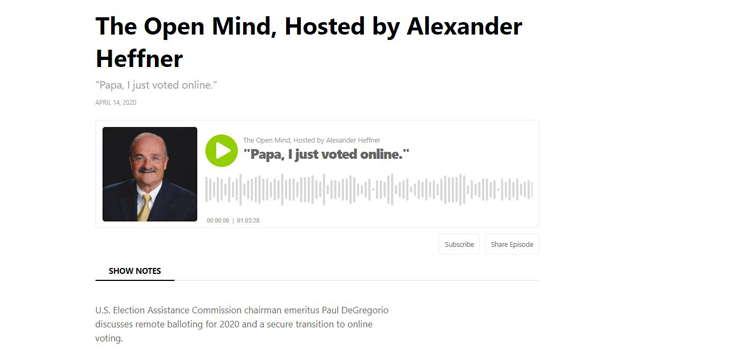
At the moment election officials and commissions around the world are scrambling to find workable solutions for safe voting in the near term. Elections have been delayed worldwide and, in the US, primaries have been postponed while states look for practical and effective ways for voters to cast ballots in November’s presidential election. But the spread of coronavirus and the global COVID-19 pandemic also gives us a compelling reason to re-examine the long-term future of elections.
Health experts warn that the virus will be around for some time, and we may see infections in annual waves. The new reality is going to demand that all possible solutions be put on the table.
In the US, expanding vote-by-mail (VBM) is one solution that may provide some short-term relief to crowded polling stations, but it has its own set of drawbacks. Further, VBM in its current form is typically not accessible to many of the millions of voters with disabilities.
Paul DeGregorio, chairman emeritus for the U.S. Election Assistance Commission (EAC), offers up some compelling ideas about the future of voting in a wide-ranging discussion with author, journalist and analyst Alexander Heffner on a podcast of the PBS TV show, “The Open Mind.” Listen to the podcast by clicking here.
There are many paths open for the future of voting. VBM is just one, and it is most common in the US. There are also hybrid solutions, such as online ballot delivery (OBD) and different types of remote voting. But online voting seems to be a guaranteed part of future elections, as Paul’s granddaughter tells him in the opening of the podcast.
Estonia has been the vanguard for remote voting, and their online voting platform has gained popularity continuously since it was first introduced in 2005. During the 2019 European Parliamentary election, online voting accounted for 47% of all votes cast in the Baltic nation. Online voting did not substitute traditional voting, it complemented it, contributing to an overall increase in participation.
Internet voting is available to Estonians throughout their voting window, starting with early voting and right up through Election Day. Estonia also offers voting by mail (post) and in-person voting.
Many future solutions are in use now but are still evolving. It is more than likely that the future of voting will be a combination offering to voters. The mix of channels will, no doubt, continue to include in-person voting, but it must be made safe for voters and poll workers. Thus, election officials have quite a task on their hands in the short term.